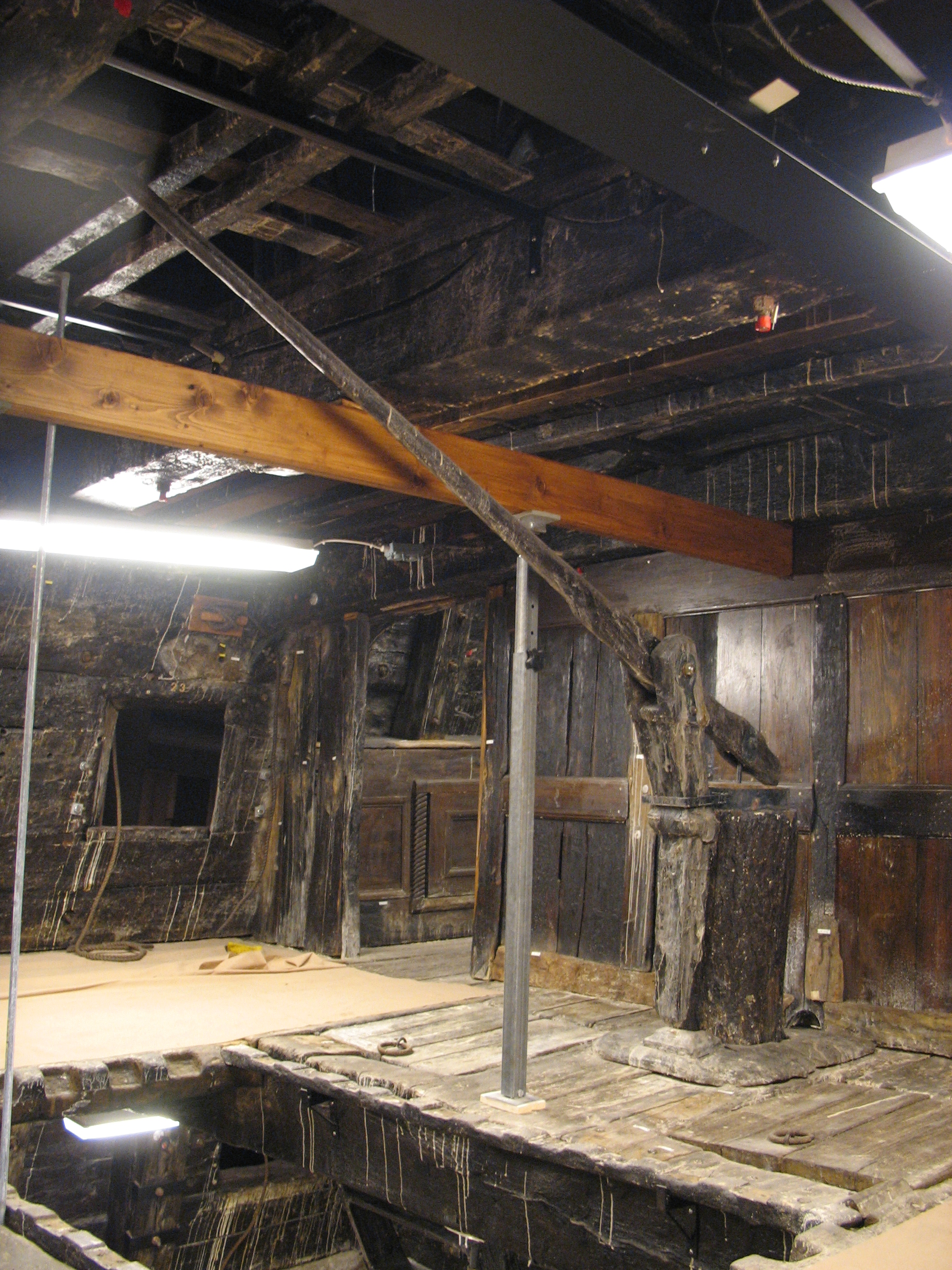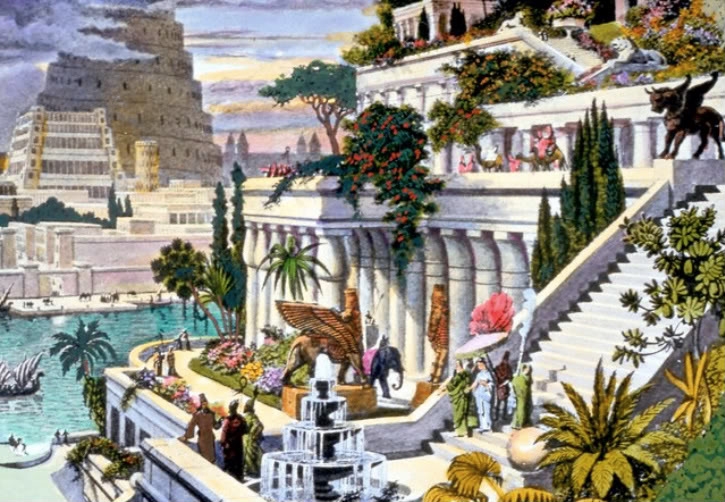|
Bilge Pump
A bilge pump is a water pump used to remove bilge water. Since fuel can be present in the bilge, electric bilge pumps are designed to not cause sparks. Electric bilge pumps are often fitted with float switches which turn on the pump when the bilge fills to a set level. Since bilge pumps can fail, use of a backup pump is often advised. The primary pump is normally located at the lowest point of the bilge, while the secondary pump would be located somewhat higher. This ensures that the secondary pump activates only when the primary pump is overwhelmed or fails, and keeps the secondary pump free of the debris in the bilge that tends to clog the primary pump. Ancient bilge force pumps had a number of common uses. Depending on where the pump was located in the hull of the ship, it could be used to suck in sea water into a live fish tank to preserve fish until the ship was docked and the fish ready to be sold. Another use of the force pump was to combat fires. Water would again be s ... [...More Info...] [...Related Items...] OR: [Wikipedia] [Google] [Baidu] |
Athenaeus
Athenaeus of Naucratis (; grc, Ἀθήναιος ὁ Nαυκρατίτης or Nαυκράτιος, ''Athēnaios Naukratitēs'' or ''Naukratios''; la, Athenaeus Naucratita) was a Greek rhetorician and grammarian, flourishing about the end of the 2nd and beginning of the 3rd century AD. The ''Suda'' says only that he lived in the times of Marcus Aurelius, but the contempt with which he speaks of Commodus, who died in 192, shows that he survived that emperor. He was a contemporary of Adrantus. Several of his publications are lost, but the fifteen-volume '' Deipnosophistae'' mostly survives. Publications Athenaeus himself states that he was the author of a treatise on the ''thratta'', a kind of fish mentioned by Archippus and other comic poets, and of a history of the Syrian kings. Both works are lost. The ''Deipnosophistae'' The '' Deipnosophistae'', which means "dinner-table philosophers", survives in fifteen books. The first two books, and parts of the third, eleventh and ... [...More Info...] [...Related Items...] OR: [Wikipedia] [Google] [Baidu] |
Hanging Gardens Of Babylon
The Hanging Gardens of Babylon were one of the Seven Wonders of the Ancient World listed by Hellenic culture. They were described as a remarkable feat of engineering with an ascending series of tiered gardens containing a wide variety of trees, shrubs, and vines, resembling a large green mountain constructed of mud bricks. It was said to have been built in the ancient city of Babylon, near present-day Hillah, Babil province, in Iraq. The Hanging Gardens' name is derived from the Greek word (, ), which has a broader meaning than the modern English word "hanging" and refers to trees being planted on a raised structure such as a terrace. According to one legend, the Hanging Gardens were built alongside a grand palace known as ''The Marvel of Mankind'', by the Neo-Babylonian King Nebuchadnezzar II (who ruled between 605 and 562 BC), for his Median wife, Queen Amytis, because she missed the green hills and valleys of her homeland. This was attested to by the Babylonian priest B ... [...More Info...] [...Related Items...] OR: [Wikipedia] [Google] [Baidu] |
Vitruvius
Vitruvius (; c. 80–70 BC – after c. 15 BC) was a Roman architect and engineer during the 1st century BC, known for his multi-volume work entitled ''De architectura''. He originated the idea that all buildings should have three attributes: , , and ("strength", "utility", and "beauty"). These principles were later widely adopted in Roman architecture. His discussion of perfect proportion in architecture and the human body led to the famous Renaissance drawing of the ''Vitruvian Man'' by Leonardo da Vinci. Little is known about Vitruvius' life, but by his own descriptionDe Arch. Book 1, preface. section 2. he served as an artilleryman, the third class of arms in the Roman military offices. He probably served as a senior officer of artillery in charge of ''doctores ballistarum'' (artillery experts) and ''libratores'' who actually operated the machines. As an army engineer he specialized in the construction of ''ballista'' and '' scorpio'' artillery war machines for sieges. ... [...More Info...] [...Related Items...] OR: [Wikipedia] [Google] [Baidu] |
Archimedes' Screw
The Archimedes screw, also known as the Archimedean screw, hydrodynamic screw, water screw or Egyptian screw, is one of the earliest hydraulic machines. Using Archimedes screws as water pumps (Archimedes screw pump (ASP) or screw pump) dates back many centuries. As a machine used for pump, transferring water from a low-lying body of water into irrigation ditches, water is pumped by turning a screw-shaped surface inside a pipe. In the modern world, Archimedes screw pumps are widely used in wastewater treatment plants and for dewatering low-lying regions. Screw turbine, Archimedes Screws Turbines (ASTs) are a new form of small hydroelectric powerplant that can be applied even in low head sites. Screw turbine, Archimedes screw generators operate in a wide range of flows (0.01 m^3/s to 14.5 m^3/s) and heads (0.1 m to 10 m), including low heads and moderate flow rates that is not ideal for traditional turbines and not occupied by high performance technologies. The Archimedes screw is a ... [...More Info...] [...Related Items...] OR: [Wikipedia] [Google] [Baidu] |
Aphrodite
Aphrodite ( ; grc-gre, Ἀφροδίτη, Aphrodítē; , , ) is an ancient Greek goddess associated with love, lust, beauty, pleasure, passion, and procreation. She was syncretized with the Roman goddess . Aphrodite's major symbols include myrtles, roses, doves, sparrows, and swans. The cult of Aphrodite was largely derived from that of the Phoenician goddess Astarte, a cognate of the East Semitic goddess Ishtar, whose cult was based on the Sumerian cult of Inanna. Aphrodite's main cult centers were Cythera, Cyprus, Corinth, and Athens. Her main festival was the Aphrodisia, which was celebrated annually in midsummer. In Laconia, Aphrodite was worshipped as a warrior goddess. She was also the patron goddess of prostitutes, an association which led early scholars to propose the concept of "sacred prostitution" in Greco-Roman culture, an idea which is now generally seen as erroneous. In Hesiod's ''Theogony'', Aphrodite is born off the coast of Cythera from the foam (, ) ... [...More Info...] [...Related Items...] OR: [Wikipedia] [Google] [Baidu] |
Gymnasium (ancient Greece)
The gymnasium ( grc-gre, γυμνάσιον, gymnásion) in Ancient Greece functioned as a training facility for competitors in public games. It was also a place for socializing and engaging in intellectual pursuits. The name comes from the Ancient Greek term '' gymnós'', meaning "naked" or "nude". Only adult male citizens were allowed to use the gymnasia. Athletes competed nude, a practice which was said to encourage aesthetic appreciation of the male body, and to be a tribute to the gods. Gymnasia and palaestrae (wrestling schools) were under the protection and patronage of Heracles, Hermes and, in Athens, Theseus. Etymology The word ''gymnasium'' is the latinisation of the Greek noun γυμνάσιον (''gymnasion''), "public place for physical exercises; exercise area", in pl. "bodily exercises" and generally "school", which in turn is derived from the common Greek adjective (''gymnos'') meaning "naked" or "nude", by way of the related verb γυμνάζω (''gymnazo''), ... [...More Info...] [...Related Items...] OR: [Wikipedia] [Google] [Baidu] |
Syracusia
''Syracusia'' ( el, Συρακουσία, ''syrakousía'', literally "of Syracuse") was an ancient Greek ship sometimes claimed to be the largest transport ship of antiquity. She was reportedly too big for any port in Sicily, and thus only sailed once from Syracuse in Sicily to Alexandria in the Ptolemaic Kingdom of Egypt, whereupon she was given as a present to Ptolemy III Euergetes. The exact dimension of Syracusia is unknown; Michael Lahanas put it at 55 m long, 14 m wide, and 13 m high. General characteristics ''Syracusia'' was designed by Archimedes and built around 240 BC by Archias of Corinth on the orders of Hieron II of Syracuse. The historian Moschion of Phaselis said that ''Syracusia'' could carry a cargo of some 1600 to 1800 tons and a capacity of 1,942 passengers. She reputedly bore more than 200 soldiers, as well as a catapult. She sailed only once to berth in Alexandria, where she was later given to Ptolemy (Ptolemaios) III Euergetes of Egypt and renamed ''Ale ... [...More Info...] [...Related Items...] OR: [Wikipedia] [Google] [Baidu] |
Water Pump
A pump is a device that moves fluids (liquids or gases), or sometimes slurries, by mechanical action, typically converted from electrical energy into hydraulic energy. Pumps can be classified into three major groups according to the method they use to move the fluid: ''direct lift'', ''displacement'', and ''gravity'' pumps. Mechanical pumps serve in a wide range of applications such as pumping water from wells, aquarium filtering, pond filtering and aeration, in the car industry for water-cooling and fuel injection, in the energy industry for pumping oil and natural gas or for operating cooling towers and other components of heating, ventilation and air conditioning systems. In the medical industry, pumps are used for biochemical processes in developing and manufacturing medicine, and as artificial replacements for body parts, in particular the artificial heart and penile prosthesis. When a casing contains only one revolving impeller, it is called a single-stage pump. Whe ... [...More Info...] [...Related Items...] OR: [Wikipedia] [Google] [Baidu] |
Foot Power Bilge Pump
The foot ( : feet) is an anatomical structure found in many vertebrates. It is the terminal portion of a limb which bears weight and allows locomotion. In many animals with feet, the foot is a separate organ at the terminal part of the leg made up of one or more segments or bones, generally including claws or nails. Etymology The word "foot", in the sense of meaning the "terminal part of the leg of a vertebrate animal" comes from "Old English fot "foot," from Proto-Germanic *fot (source also of Old Frisian fot, Old Saxon fot, Old Norse fotr, Danish fod, Swedish fot, Dutch voet, Old High German fuoz, German Fuß, Gothic fotus "foot"), from PIE root *ped- "foot". The "plural form feet is an instance of i-mutation." Structure The human foot is a strong and complex mechanical structure containing 26 bones, 33 joints (20 of which are actively articulated), and more than a hundred muscles, tendons, and ligaments.Podiatry Channel, ''Anatomy of the foot and ankle'' The joints of the ... [...More Info...] [...Related Items...] OR: [Wikipedia] [Google] [Baidu] |
Hull (watercraft)
A hull is the watertight body of a ship, boat, or flying boat. The hull may open at the top (such as a dinghy), or it may be fully or partially covered with a deck. Atop the deck may be a deckhouse and other superstructures, such as a funnel, derrick, or mast. The line where the hull meets the water surface is called the waterline. General features There is a wide variety of hull types that are chosen for suitability for different usages, the hull shape being dependent upon the needs of the design. Shapes range from a nearly perfect box in the case of scow barges to a needle-sharp surface of revolution in the case of a racing multihull sailboat. The shape is chosen to strike a balance between cost, hydrostatic considerations (accommodation, load carrying, and stability), hydrodynamics (speed, power requirements, and motion and behavior in a seaway) and special considerations for the ship's role, such as the rounded bow of an icebreaker or the flat bottom of a landing craft. ... [...More Info...] [...Related Items...] OR: [Wikipedia] [Google] [Baidu] |









